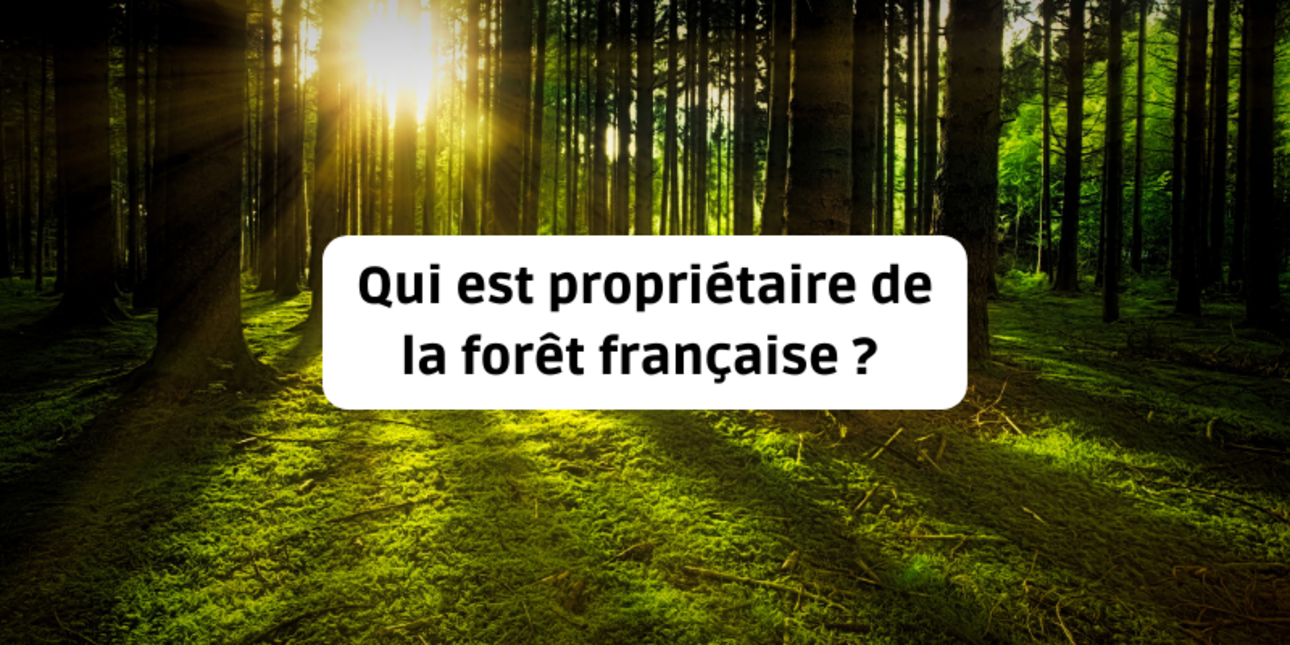
Are you looking for a woodland or forest for sale? If so, it's worth finding out about the specifics of the French forest.
This article presents the different owners of the French forestry market and the main trends in terms of transactions.
Forests cover 31% of the total surface area of mainland France and are extremely fragmented. Of the 17.3 million hectares of woodland, the State, local authorities and public establishments own more than 4. The remaining 13 million hectares are owned by 3.1 million private owners, with an average surface area of 4 hectares.. 
The surface area of woodland and forests in the 5 overseas departments and regions is also very high, particularly in French Guiana, which alone accounts for 8 million hectares (owned by the State).
Predominantly made up of deciduous trees (64%, mainly oaks), the French forest comprises "pure" stands (a single species) covering 7.2 million hectares and "mixed" stands covering 7.5 million hectares. The Landes massif, made up almost exclusively of maritime pines, is a striking example of a pure stand.
A quarter of our country's forests are owned by the State, local authorities and public establishments.
State-owned forests cover 1.7 million hectares and are managed by the ONF (Office National des Forêts). The State also has a right of pre-emption on sales of forest plots affecting its state-owned forests.

While a quarter of France's forests are publicly owned, three quarters are privately owned. These 13 million hectares are held by 3.1 million private owners and represent an average surface area of 4 hectares.
But there are major disparities between forest holdings, as can be seen in this infographic from the Key figures for private forestry.
According to Le Figaro, the largest private owners include the Louis Dreyfus group (owner of 4,000 hectares in Brittany), the d'Orléans family (owner of 2,000 hectares in Aisne), the Besnier family (Lactalis), the Dassault family, etc.
However, the largest areas of woodland are owned by financial groups including Caisse des Dépôts (50,000 ha), CNP (53,000ha) (Court of Auditors report on the management of Société Forestière, September 2015), Groupama (22,000ha), Axa (15,000ha), etc., some on their own behalf and some on behalf of investor clients (through shares in Groupements Foncier Forestiers).
The fragmentation of private forests means that management is not considered sufficiently sustainable or job-creating. To reduce this fragmentation, the legislator has introduced a preferential right to inform owners of contiguous plots when selling a forest plot of less than 4 hectares.
It should be noted that above a surface area of 25 hectares, it is compulsory to set up a Simple Management Plan, a document that details the various management operations planned over a long period and subsequently facilitates administrative declarations.
Every year, the area of forest in France increases by around 85,000 hectares.
Bad or unusable farmland is gradually being abandoned. They are being reforested either naturally or artificially.
The reduction in farmland in France is not just the result of urbanisation, but also of the abandonment of farms.
Private woodland and forest owners are very attached to their property, which is often a family heirloom. The majority are elderly (71% are over 55).
There are many reasons why these private owners of woodland parcels want to own it:
They are generally quite active in their forest management, which they carry out either themselves or through a professional manager. They can also call on the services of the Centre National de la Propriété Forestière (CNPF).
From an environmental point of view, which is an increasingly important criterion for buyers, forests are among the largest carbon sinks on the planet, making a major contribution to the fight against climate change. It is estimated that forests in France store 1.3 billion tonnes of CO2.
25% of private woodland is held by companies, which have been expanding rapidly for a number of years (75% being held by individuals), particularly in the context of Groupements Fonciers Forestiers (GFF).
A GFF is a special type of non-trading property company designed to enable savers to invest in forests by pooling ownership and therefore risks.
They can be marketed by major financial groups or by specialist companies such as France Valley, which offers shares in its Groupement Foncier Fortier from €30,000.
A very active forestry market
Every year, SAFER publishes a study on forest prices. You can also find a more succinct presentation on the land prices website.
The average sale price of forests was €4,630/ha in 2022, up 4.2% on 2021. This price has been rising steadily since 1997 (€2,180/ha).
Forest purchase is a market in which there are few properties available and where there is strong demand from buyers.
However, the surface area sold continues to grow each year (almost 160,000 hectares will be transferred by 2022).
However, there are major disparities between regions and types of sale (size and type of plot). The average sale price is lower for small properties than for large ones:
Maximum sale prices are now approaching €15,000/ha.
¼ of France's forests are owned by the State and other public bodies, and ¾ by private individuals.
These private owners are mainly individuals who own small areas, but also large financial groups with very large holdings.
The market for the sale of woodland and forests is very tight, with supply struggling to meet demand from the many applicants, resulting in a steady rise in prices over the past 25 years.